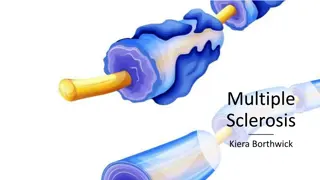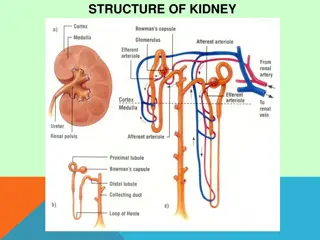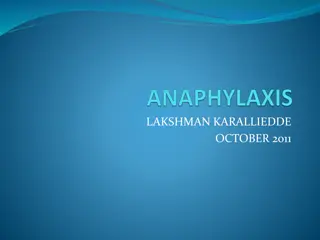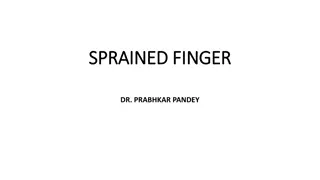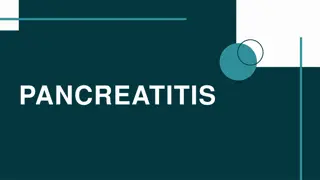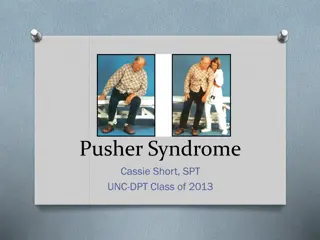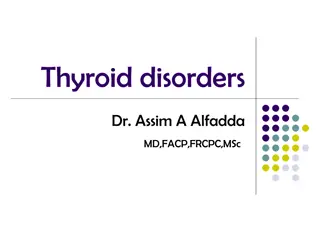Understanding Hemiplegia: Symptoms, Causes, and Treatment
Hemiplegia is a condition resulting from brain damage or spinal cord injury, leading to paralysis on one side of the body. Explore its symptoms, causes like stroke or brain infections, and available treatments to help manage this condition effectively.
Download Presentation

Please find below an Image/Link to download the presentation.
The content on the website is provided AS IS for your information and personal use only. It may not be sold, licensed, or shared on other websites without obtaining consent from the author.If you encounter any issues during the download, it is possible that the publisher has removed the file from their server.
You are allowed to download the files provided on this website for personal or commercial use, subject to the condition that they are used lawfully. All files are the property of their respective owners.
The content on the website is provided AS IS for your information and personal use only. It may not be sold, licensed, or shared on other websites without obtaining consent from the author.
E N D
Presentation Transcript
StudyMafia.Org Hemiplegia Submitted To: Studymafia.org Studymafia.org Submitted By:
Table Contents Definition Introduction Hemiparesis Vs. Hemiplegia Symptoms of Hemiplegia Causes of Hemiplegia Types of Hemiplegia Is Hemiplegia permanent? Treatment of Hemiplegia Resources for people with Hemiplegia Conclusion 2
Definition Hemiplegia is a condition caused by brain damage or spinal cord injury that leads to paralysis on one side of the body. 3
Introduction It causes weakness, problems with muscle control, and muscle stiffness. The degree of hemiplegia symptoms vary depending on the location and extent of the injury. If hemiplegia onsets before birth, during birth, or within the first 2 years of life, it s known as congenital hemiplegia. If hemiplegia develops later in life, it s known as acquired hemiplegia. Hemiplegia is non-progressive. Once the disorder begins, symptoms don t get worse. 4
Hemiparesis Vs. Hemiplegia Hemiparesis and hemiplegia are often used interchangeably and produce similar symptoms. A person with hemiparesis experiences weakness or a slight paralysis on one side of their body. A person with hemiplegia can experience up to full paralysis on one side of their body and may have trouble speaking or breathing. 5
Symptoms of Hemiplegia Hemiplegia can affect either the left or right side of your body. Whichever side of your brain is affected causes symptoms on the opposite side of your body. People can have different symptoms from hemiplegia depending on its severity. Children with hemiplegia may also take longer to reach developmental milestones than their peers. They may also use only one hand when playing or keep one hand in a fist. 6
Causes of Hemiplegia Stroke Strokes are one of the most common causes of hemiparesis. The severity of muscle weakness that you experience can depend on the size and location of a stroke. Strokes in the womb are the most common cause of hemiplegia in children. Brain infections A brain infection can cause permanent damage to the cortex of the brain. Most infections are caused by bacteria, but some infections may also be viral or fungal. 8
Causes of Hemiplegia Brain trauma A sudden impact to your head can cause permanent brain damage. If the trauma only affects one side of your brain, hemiplegia can develop. Common causes of trauma include car collisions, sports injury, and assaults. Genetics An extremely rare mutation of the ATP1A3 gene can cause a condition known as alternating hemiplegia in children. It causes temporary hemiplegia symptoms that come and go. 9
Causes of Hemiplegia Brain tumors Brain tumors can lead to a variety of physical problems including hemiplegia. Symptoms of hemiplegia may get worse as the tumor grows. 10
Types of Hemiplegia Facial hemiplegia People with facial hemiplegia experience paralyzed muscles on one side of their face. Facial hemiplegia may also be coupled with a slight hemiplegia elsewhere in the body. Spinal hemiplegia Spinal hemiplegia is also referred to as Brown-Sequard syndrome. It involves damage on one side of the spinal cord that results in paralysis on the same side of the body as the injury. 11
Types of Hemiplegia Contralateral hemiplegia This refers to paralysis on the opposite side of the body that brain damage occurs in. Spastic hemiplegia This is a type of cerebral palsy that predominately affects one side of the body. The muscles on the affected side are constantly contracted or spastic. 12
Is Hemiplegia permanent? Hemiplegia is a permanent condition and there s no cure at this time. It s known as a non-progressive disease because the symptoms don t get worse over time. A person with hemiplegia who undergoes an effective treatment program may be able to improve the symptoms of their hemiplegia over time. People with hemiplegia can often live independent and active lives with the use mobility aids. 13
Treatment of Hemiplegia Physiotherapy Working with a physiotherapist allows people with hemiplegia to develop their balance ability, build strength, and coordinate movement. A physiotherapist can also help stretch out tight and spastic muscles. Modified constraint-induced movement therapy (mCIMT) Modified constraint-induced movement therapy involves restraining the side of your body unaffected by hemiplegia. This treatment option forces your weaker side to compensate and aims to improve your muscle control and mobility. 14
Treatment of Hemiplegia Assistive devices Some physical therapists may recommend the use of a brace, cane, wheelchair, or walker. Using an assistive device may help improve muscular control and mobility. Mental imagery Imagining moving the paralyzed half of your body may help activate the parts of the brain responsible for movement. Mental imagery is often paired with other therapies and is rarely used by itself. 15
Treatment of Hemiplegia Electrical stimulation A medical professional can help stimulate muscular movement by using electrical pads. The electricity allows muscles that you can t move consciously to contract. Electrical stimulation aims to reduce imbalances in the affected side of the brain and improve brain plasticity. 16
Resources for people with Hemiplegia If you have a child with hemiplegia, you can find information and support from the Children s Hemiplegia and Stroke Association website. You can find specific resources for your state on their website. If you re managing hemiplegia caused by a stroke, you can find a long list of resources on the Stroke Center website. 17
Conclusion Hemiplegia is a severe paralysis on one side of your body caused by brain damage. It s a non- progressive disorder and doesn t get worse once it develops. With a proper treatment plan, it s possible to improve the symptoms of hemiplegia. 18
References Google.com Wikipedia.org Studymafia.org Slidespanda.com
Thanks To StudyMafia.org





